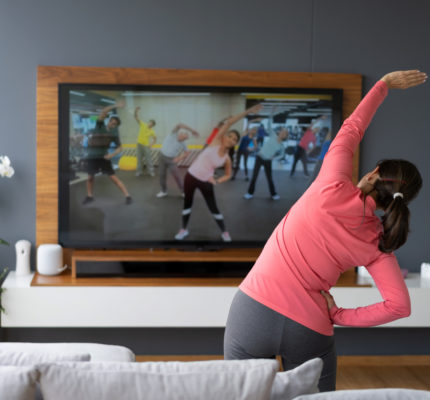 Welcoming workers back into the office means deciding whether your organization will require employees to be vaccinated, and possibly thinking about ways to incentivize employees to get the vaccine. This week’s blog focuses on popular incentives and strategies that our clients and other employers are putting in place.
Welcoming workers back into the office means deciding whether your organization will require employees to be vaccinated, and possibly thinking about ways to incentivize employees to get the vaccine. This week’s blog focuses on popular incentives and strategies that our clients and other employers are putting in place.
The Equal Employment Opportunity Commission (EEOC) recently cleared the way for employers to implement mandatory COVID-19 vaccination policies, with exceptions for disability-related concerns or religious beliefs. The Commission also established that it is legal to ask for proof of vaccination. And yet, not all companies will require employees to get the vaccine. A survey conducted by Mercer in April-May 2021 found that just 3% will mandate vaccines for all employees.
Instead, many employers are strongly encouraging employees to get vaccinated by educating and incentivizing them to decide on their own. If this is the route you’re interested in taking as well, here are some strategies for boosting the vaccination rate in your workplace:
Link vaccinations to your well-being program or health accounts.
Employees can self-certify that they’ve been vaccinated or upload their vaccine card and receive wellness points to use toward prizes and gifts that are part of the well-being program. Many companies already do this to incentivize employees to get their annual flu shot. Or, make a contribution to a health savings account or flexible spending account.
Provide paid time off (PTO).
Some states mandate that employers provide a certain amount of PTO to get vaccinated. Employers are also offering PTO for recovery in case of side effects. Of the employers in Mercer’s study, 53% granted PTO to get vaccinated and 34% offered time off for recovery. Walmart extended its emergency leave policy to include three days of paid leave for any vaccine side effects. Some companies are even granting a holiday or extra day off for the whole organization once the level of employee vaccinations reaches a certain threshold.
Remove barriers to getting the vaccine.
Target is providing free Lyft rides to vaccination centers. National childcare provider Bright Horizons offers free childcare to support the vaccination of over 10 million workers employed at participating organizations. Others are hosting onsite vaccination clinics—similar to flu shot clinics—to make it super-easy for employees.
Offer gift cards, cash awards or charitable contributions.
It’s legal to offer employees token gift cards or cash awards to encourage them to provide proof of vaccination. Kroger, the nation’s largest supermarket chain, will give employees a $100 bonus once they can show proof of inoculation. For every employee who gets vaccinated, you could also make a donation to a local charity that fits with your company’s mission.
What to do if you’re still not seeing the desired level of employee vaccination.
We know that some people may still be hesitant to get the vaccine, and that’s okay. Remember, well-being is personal, so getting the vaccine is a personal choice that can’t feel forced. But if you’re hoping your organization will reach a specific threshold of vaccinated staff, there are a couple of things you can do to encourage those who haven’t yet received the vaccine to at least consider it.
Focus on education and dispelling myths around the COVID-19 vaccine.
Post clinical information from reputable sources on the intranet, send myth-busting emails about the vaccine, devote time in a town hall for a Q&A with a medical expert, host vaccine lunch-and-learns where employees can ask questions in a smaller setting—all of these might help to convince reluctant employees to receive the vaccine.
Leverage well-being champions.
Harness the positive power of peer pressure and ask well-being champions to post a selfie or short video explaining why they got the vaccine. According to the Kaiser Family Foundation, “knowing someone who has been vaccinated and seeing that the vaccine does not produce any significant adverse effects is emerging as the leading reason people are willing to get vaccinated themselves.”
Have senior leadership communicate about the benefits of getting vaccinated.
Allow leaders to speak openly about getting the vaccine and how the company as a whole will benefit once most employees are vaccinated. For example, the cafeteria will fully open, town halls will be held in person, and small, unmasked gatherings can take place.
Try a different tack.
For individuals whose vaccine hesitancy is based on emotion or ideology, the messaging may need to be different. Dr. Megan Ranney, an emergency physician at Brown University, recommends using language like “there is a vaccine reserved for you,” a tactic that has been successful in getting people to receive the flu shot. Also, avoid messaging that any type of “authority” or “institution” wants employees to get vaccinated. Steven Taylor, Ph.D., a clinical psychologist at the University of British Columbia in Canada, suggests a message like “Getting vaccinated is a right you have, don’t let people take that away from you.”
The hope is that a concerted education campaign and incentive program will result in the majority of employees being fully vaccinated. However, in the end, there will still be some employees who are not convinced. Employers will then need to shift their focus on ensuring the health and safety of the entire organization with continued COVID-19 protocols like masking and proper ventilation.
Do you need help developing your organization’s vaccination strategy? Reach out to connect@webmd.net.
Related Content:





